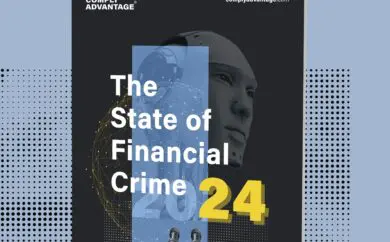In 1992, Singapore criminalized money laundering under the Drug Trafficking (Confiscation of Benefits) Act (DTA). However, due to criticism of the DTA’s limited scope, criminalizing only drug-related offenses as money laundering – an amendment to the legislation was introduced in 1999. Now known as the Corruption, Drug Trafficking, and Other Serious Crimes (Confiscation of Benefits) Act (CDSA), the amended law expanded the scope of money laundering offenses to include non-drug-related offenses.
The main difference between the DTA and the CDSA is that the CDSA regime adopts a “predicate offense approach,” which specifies that the laundering of proceeds from all drug trafficking offenses and 182 other serious crimes constitutes a money laundering offense. By contrast, according to the CDSA, laundering proceeds from criminal activities outside these categories is not considered “money laundering,” although it is still punishable under other laws.
This article provides financial institutions (FIs) with an overview of the CDSA to help ensure compliance with its regulations.
What is the Corruption, Drug Trafficking and Other Serious Crimes Act (CDSA) in Singapore?
The CDSA is a crucial piece of legislation in Singapore’s ongoing efforts to combat financial crime. The act provides a comprehensive legislative framework to combat corruption, drug trafficking, and other serious criminal activities in Singapore. It empowers authorized officers to confiscate benefits derived from illicit activities, enforce reporting obligations, and collaborate with international agencies for investigations and asset recovery. Key entities subject to compliance include:
- Financial institutions (FIs.)
- Legal counsels.
- Individuals involved in asset management or transactions.
- Law enforcement agencies and authorized officers.
Key requirements of the CDSA
While the CDSA contains anti-money laundering (AML) rules, its primary objective is not focused on money laundering. Instead, the it aims to deprive criminals of any financial gains obtained through criminal activities by establishing a confiscation regime. The CDSA’s AML rules support this confiscation regime by preventing illegally acquired assets from being laundered into other property to evade detection and confiscation by law enforcement agencies.
Key AML requirements set out by the CDSA include:
- Developing comprehensive internal policies: Covered entities must create detailed policies and procedures to ensure compliance and effective AML monitoring. These should be based on a risk-based approach (RBA), considering the specific risks faced by the organization.
- Ensuring effective communication and regular updates: Senior compliance staff are required to ensure that all policies are clearly communicated to new employees at onboarding. Additionally, regular updates must be provided at least annually to keep them informed of any changes or updates in AML policies and procedures.
- Providing staff training: Firms must implement a robust training program for all staff members to equip them with the necessary skills to identify and handle suspicious activities effectively. This program should also emphasize the importance of AML compliance and the potential consequences of failing to adhere to regulations or adequately monitor risks.
- Conducting a comprehensive enterprise-wide risk assessment (EWRA): FIs are required to organize a thorough business assessment to identify their exposure to money laundering and terrorist financing risks. This assessment should consider various risk factors relevant to the business’ operations and market context.
- Appointing a compliance officer: The CDSA requires the designation of a compliance officer, and their specific roles and responsibilities within the AML compliance program must be clearly outlined. This individual should be empowered to oversee the establishment, implementation, and ongoing management of the AML framework.
- Reporting: Establish protocols for promptly reporting suspicious transactions to regulatory authorities. This includes identifying the types of transactions that should be considered suspicious and the process for reporting them in compliance with legal and regulatory requirements.
Who enforces the CDSA?
The CDSA is enforced throughout Singapore by a network of agencies. These include:
- Central Narcotics Bureau (CNB): Responsible for combating drug-related crimes and enforcing laws related to drug trafficking and abuse.
- Corrupt Practices Investigation Bureau (CPIB): Tasked with investigating and prosecuting corruption offenses involving public officials and bribery.
- Commercial Affairs Department (CAD): Oversees investigations into financial crimes, such as money laundering and fraud, including those related to the proceeds of drug trafficking and other serious crimes.
- Singapore Police Force (SPF): The SPF plays a crucial role in investigating a wide range of criminal offenses, including drug trafficking, corruption, and other serious crimes covered under the CDSA.
Penalties for non-compliance with the CDSA
Non-compliance with the CDSA can result in severe penalties, including fines and imprisonment. Some of the key penalties outlined in the CDSA include:
- Rash money laundering: Introduced as a new offense in February 2024, entities that proceed with transactions despite having some suspicion while also failing to make further inquiries may be charged with rash money laundering. The maximum penalty is a fine of up to $250,000, imprisonment of up to five years, or both.
- Negligent money laundering: Individuals who continue with a transaction despite the presence of red flags that would be noticeable to a reasonable person may be charged with negligent money laundering. The maximum penalty is a fine of up to $150,000, a prison sentence of up to three years, or both.
- Disclosing Singpass credentials to facilitate an offense: A Singpass credential refers to the login credentials used for accessing various digital services the Singaporean government provides. Individuals who disclose their Singpass passwords or access codes, knowing or having reasonable grounds to believe that the purpose is to commit or facilitate the commission of an offense, may be charged. The maximum penalty is a fine of up to $10,000 or imprisonment of up to three years, or both.
How can firms comply with the CDSA?
As Singapore continues strengthening its regulatory framework to combat financial crimes and uphold its economic system, compliance professionals face increasingly complex challenges in meeting their obligations under the CDSA. Luckily, advanced AML software options are available to help address these challenges effectively.
Sophisticated transaction monitoring software can help detect and flag suspicious activities that may indicate money laundering or other illicit financial behaviors as defined under the CDSA. With advanced machine learning algorithms, transaction monitoring platforms can analyze vast amounts of transactional data in real-time to identify patterns, anomalies, and red flags indicative of potential illicit activities. Furthermore, with the right solution, compliance teams can create transaction thresholds and rule sets based on their firm’s risk exposure by choosing from a library of red flags and suspicious activity scenarios.
Award-winning FinTech BigPay, which operates out of Singapore and Malaysia, experienced the benefits of these capabilities when it needed to quickly implement a more efficient screening process to meet its regulatory obligations. With ComplyAdvantage, BigPay could custom-build a single proprietary interface connecting multiple tools, trackers, and databases via a single API. The financial services firm also set up unique screening profiles for its markets, providing proportional controls for different products and transaction types – such as remittance and e-money. Accessible search profile configuration and fuzziness fine-tuning streamlined the process of aligning with new regulations, like updates to the CDSA and PSN02.
Find out how ComplyAdvantage can help fine-tune your risk management processes
1000s of organizations like yours are already using ComplyAdvantage. Learn how to streamline compliance and mitigate risk with industry-leading tools and solutions.
Book your free demo







